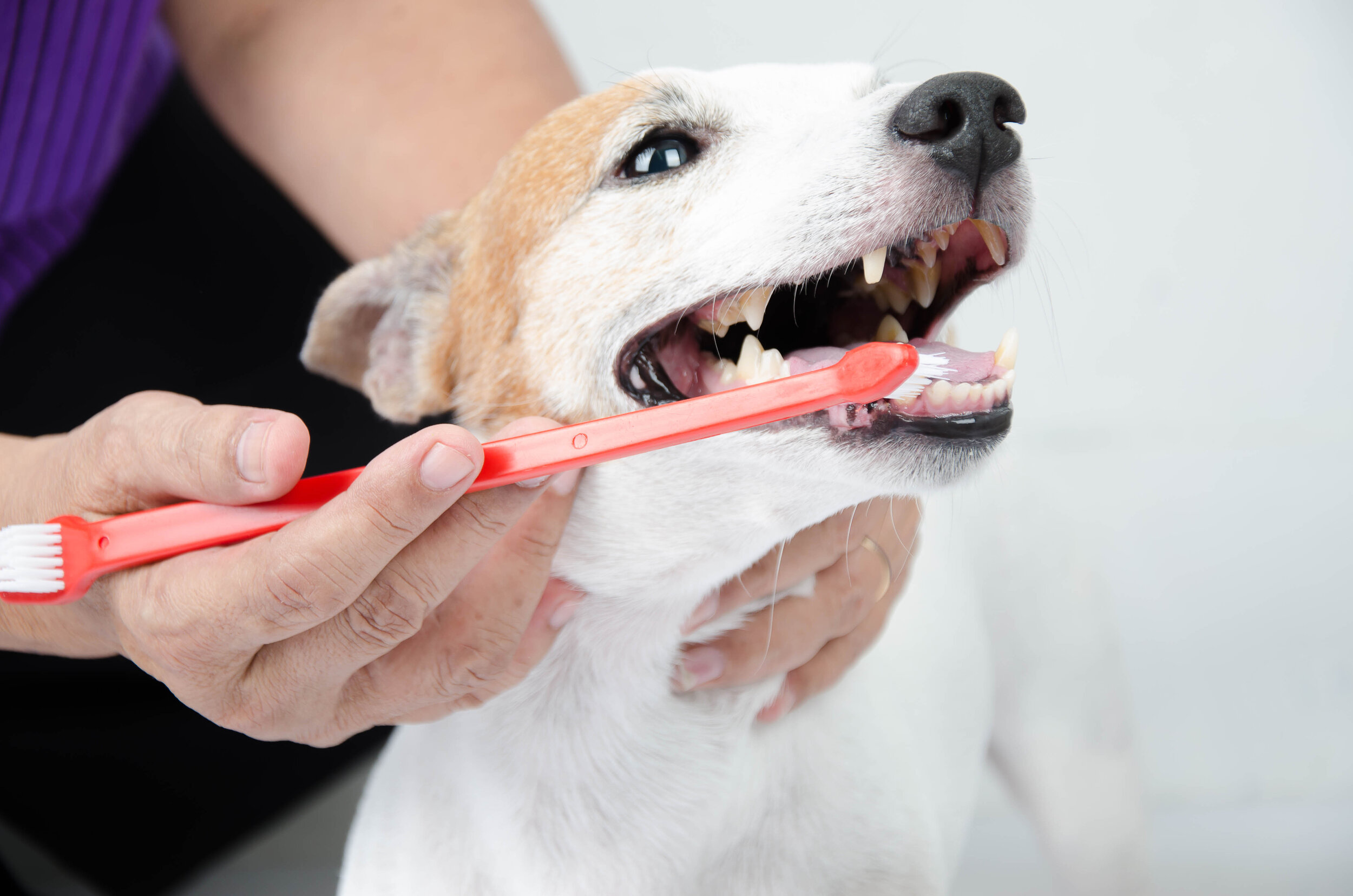6 Tips for dog’s and cat’s that hate teeth brushing
One of the best ways to take charge of your pet’s dental health is to brush their teeth. Brushing your dog’s or cat’s teeth helps to prevent the build-up of plaque and as a result minimise dental disease.
However, what if your pet hates getting their teeth brushed? What if you don’t have time? What if you are feeding them dental chews and toys? Doesn’t that mean you don’t have to brush their teeth?
Whilst these are common responses, it is possible to slowly train your pet to enjoy tooth brushing and other forms of oral care. Making time to brush their teeth can have a significant impact on their oral health and quality of life. Eating dental chews and toys contributes towards your pet’s dental health, however it doesn’t offer the same benefits of physically brushing your pet’s teeth, similar to humans! Just imagine not brushing your teeth for a year.
Not all pets like getting their teeth brushed, so we have some tips to help win them over.
1. Check their teeth first
Before you start brushing your pet’s teeth, check for signs of dental disease.
If your dog or cat has loose teeth, bleeding or swollen gums or seems sensitive around the mouth speak to your local vet before you continue brushing.
2. Start with their mouth
Get in a comfortable position with your dog or cat. Get down to their level and make sure they are calm and relaxed. Don’t hold them down.
Whilst patting your pet, slowing start touching their mouth with your fingers. Then lightly rub your finger along their gums and teeth to get them used to the feeling of you touching inside their mouth.
If you are struggling with this step, you can dip your fingers in something appealing like peanut butter (for dogs), low sodium chicken broth (make sure it doesn’t have onions or garlic) or tuna water (for cats).
Spend a few days to a week getting your pet used to the idea of you touching inside and around their mouth. Positive reinforcement is key. Give them plenty of praise, pats or a dental treat for letting you touch inside and around their mouth.
3. Introduce pet toothpaste
You will need some pet toothpaste for this step. Never use human toothpaste as it contains ingredients that can be harmful to your dog or cat’s stomach. Pets can’t spit, so the toothpaste needs to be pet friendly.
Put some pet toothpaste on your fingertip and let them try it.
If after a few tries they refuse to lick the toothpaste, it may be worth trying a different flavour. Pet toothpaste is available in a range of flavours to suit your dog or cat’s unique tastebuds.
Once you have found a flavour they like, put some on your fingertip and gently rub your finger over their teeth.
4. Introduce the toothbrush
You will need a specially designed toothbrush for pets for this step. Their bristles are softer and they are angled for your pet’s mouth. You can get finger brushes that are great for cats and small dogs or long handled toothbrushes that offer greater reach for larger dogs. Do not use a human adult toothbrush to brush your pet’s teeth. You can use a soft child’s “My First Toothbrush” if necessary. You can also use gauze swabs or even a face washer wrapped around your finger.
When your pet is used to you touching inside their mouth, start using the toothbrush with some toothpaste on it.
Hold the toothbrush at a 45-degree angle to their gum line.
Lift their upper lip and brush in small gentle circles over the surface of each tooth.
5. Build-up over time
Start with a few easy to reach teeth and work up to more each day. Start with the outside (cheek facing) teeth and back teeth where plaque tends to collect.
If you can clean the insides of their teeth, great. If they won’t let you, don’t worry as their coarse tongue helps to keep that area cleaner.
Keep it gentle and fun and limit each brushing session to a few minutes.
Aim to brush your pet’s teeth daily, but even once a week will make a difference.
6. Reassure and reward
Be gentle, pat and talk to your pet while you are brushing their teeth.
When you have finished, give them a reward. Rewards could include a dental treat, pat, praise, a toy or playtime. This way they will associate tooth brushing as a positive experience, making it easier for both of you.
Just like humans, brushing your pet’s teeth is a great way to take charge of your pet’s dental health. If you are having difficulty brushing your pet’s teeth or are concerned your pet may have dental disease, please call us on 03 8784 4444.




